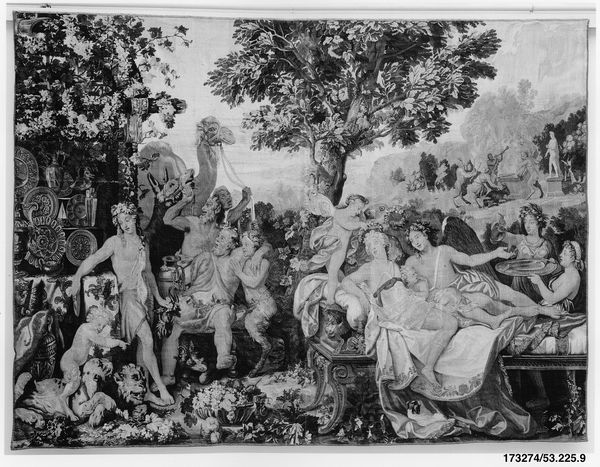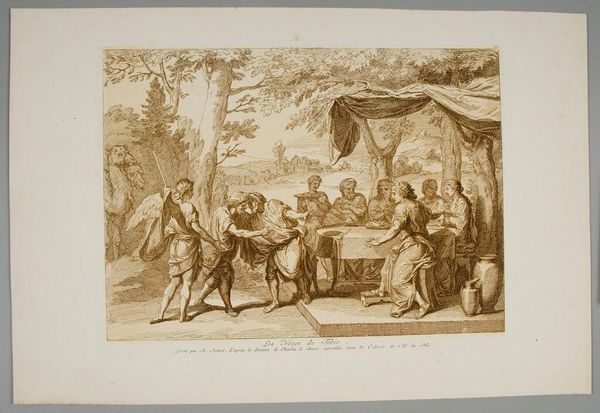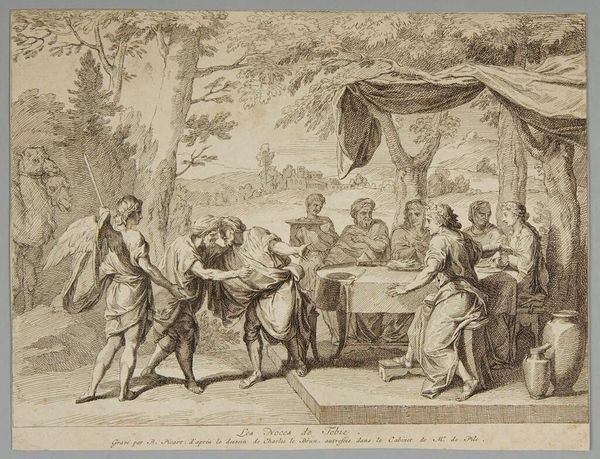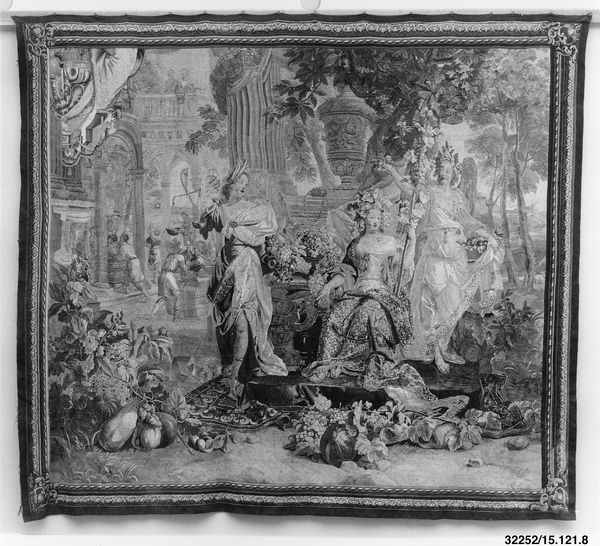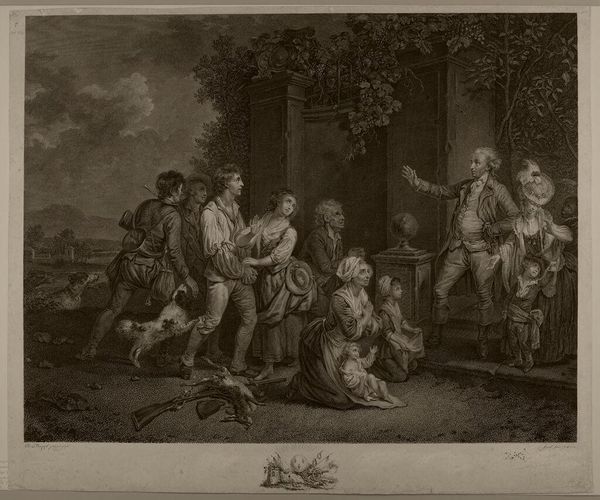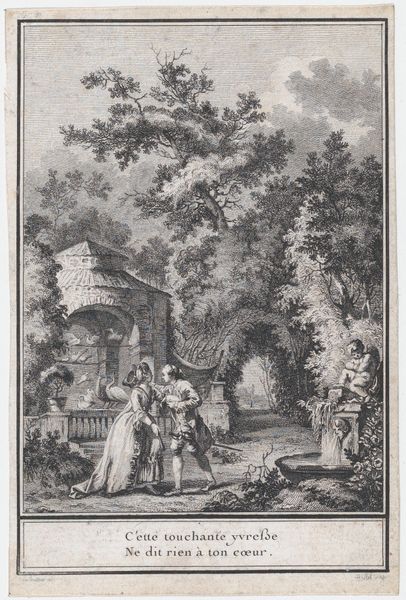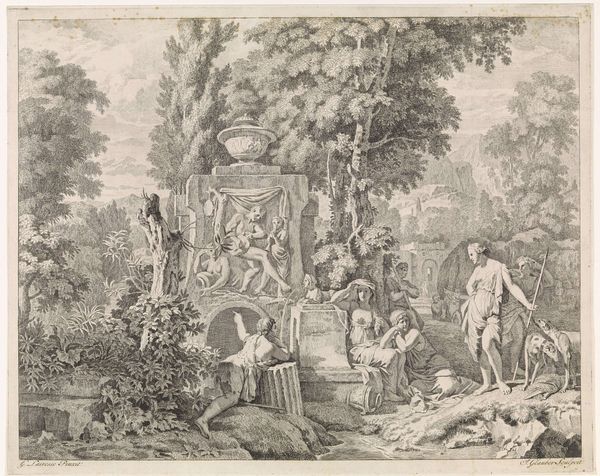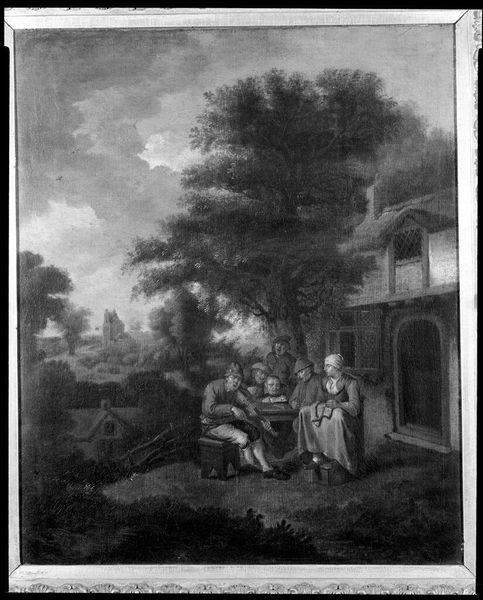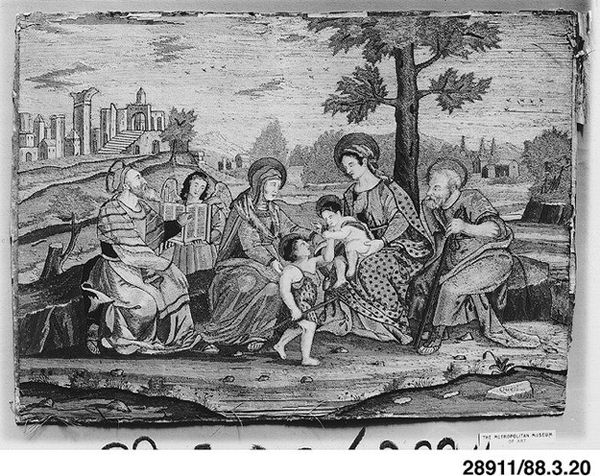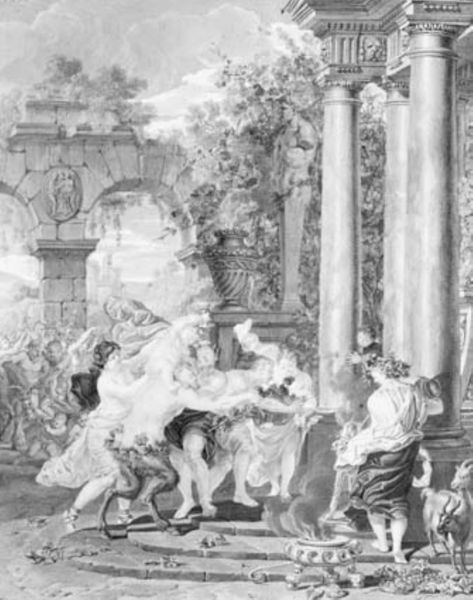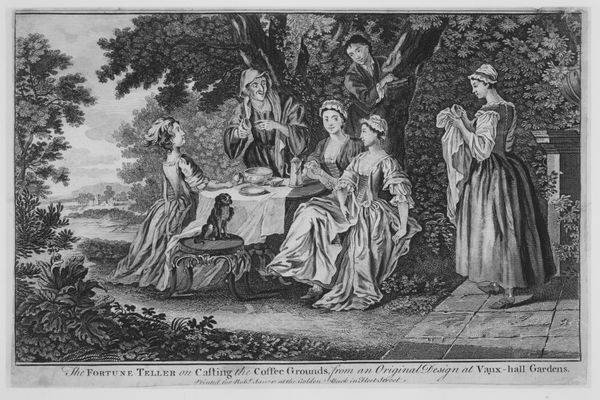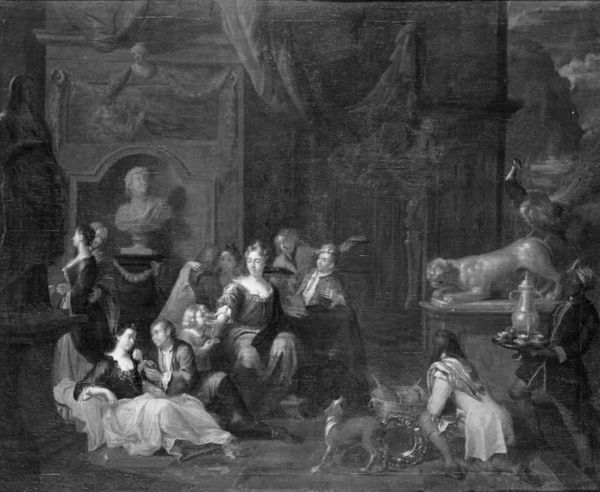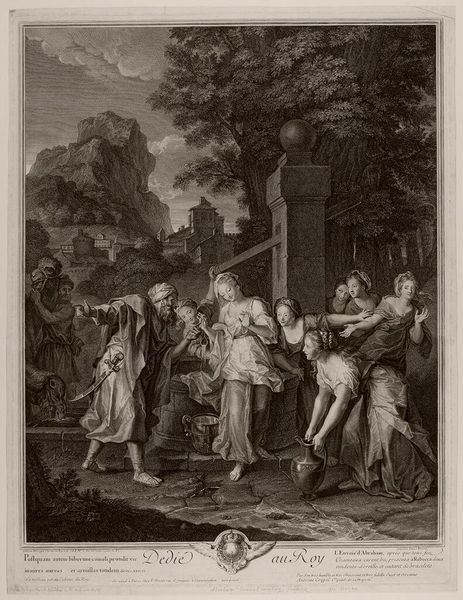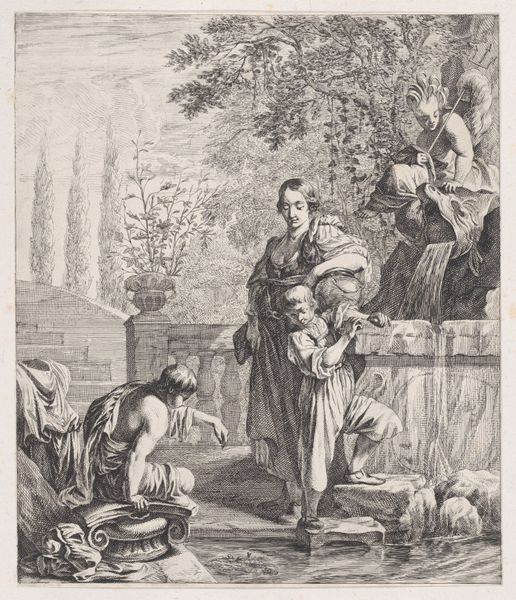
Flora from a set of the Triumph of the Gods 1700 - 1750
0:00
0:00
textile, sculpture
#
tree
#
baroque
#
landscape
#
textile
#
flower
#
figuration
#
text
#
fruit
#
sculpture
#
decorative-art
Dimensions: 9 ft. 8 in. × 10 ft. (294.6 × 304.8 cm)
Copyright: Public Domain
Curator: What a fascinating textile! This is “Flora from a set of the Triumph of the Gods,” woven between 1700 and 1750, and currently residing here at the Metropolitan Museum. The artist behind this work is Jan van Orley. Editor: It feels very staged, almost theatrical. Look at that group of figures arranged around Flora. And the background with that decorative fountain looks like an idealized vision of nature. Curator: The tapestry medium itself speaks to a particular kind of patronage. Think about where these would have been displayed— grand homes, reinforcing wealth and status. But also, the figures...notice the prominence of Flora, the goddess of flowers. That’s a very pointed visual statement. Editor: Right, so the flowers themselves carry significant symbolic weight. Flowers have long been tied to notions of beauty, fragility, and the cycle of life. The selection and arrangement are surely intentional, evoking certain virtues and ideals tied to feminine identity and the wealthy lifestyle of those commissioning it. Curator: Indeed. It also echoes classical ideas of paradise, drawing on the visual language of Arcadian landscapes popular at the time, an attempt to capture something lost. The carefully arranged garden becomes a metaphor for control and cultivation, not just of nature but of society itself. Editor: So it’s both a celebration of abundance and an assertion of power, rendered through careful iconography. It’s not just about enjoying the beauty, but about understanding its significance within a specific socio-political context. That theatrical quality hints at a performative aspect, right? The owner displaying their cultivated taste, wealth, and connection to classical ideals. Curator: Absolutely. This tapestry invites us to consider how art functioned within the elite circles of the 18th century, shaping identities and solidifying social hierarchies through visual display. Editor: It's striking how this single piece opens up so many avenues into the history of taste, power, and representation. Curator: Exactly. What at first glance might seem a simple decorative object contains a complex network of meanings, values, and social commentary.
Comments
No comments
Be the first to comment and join the conversation on the ultimate creative platform.
